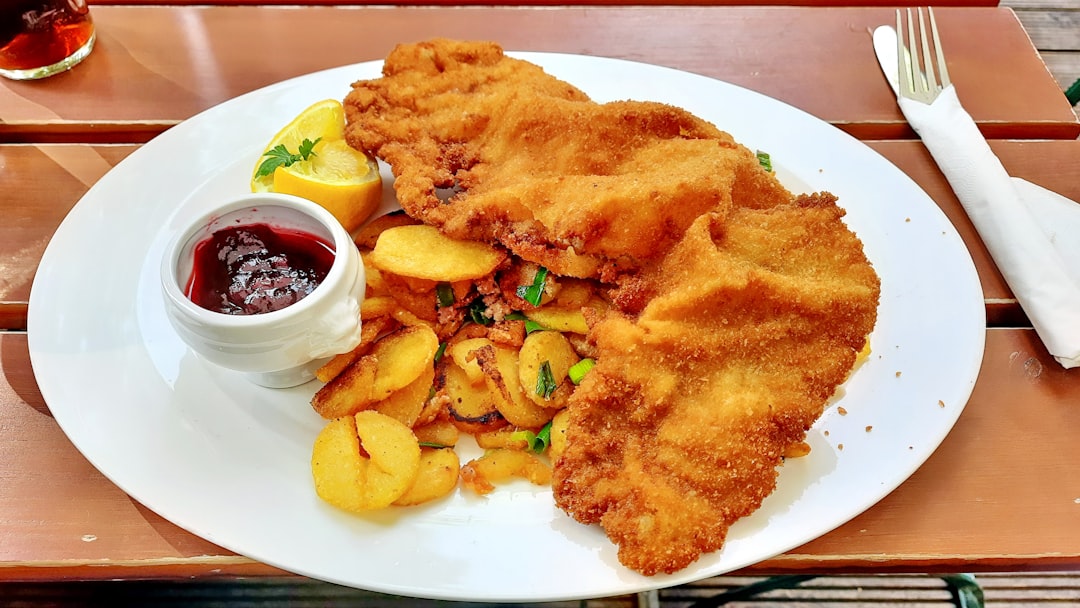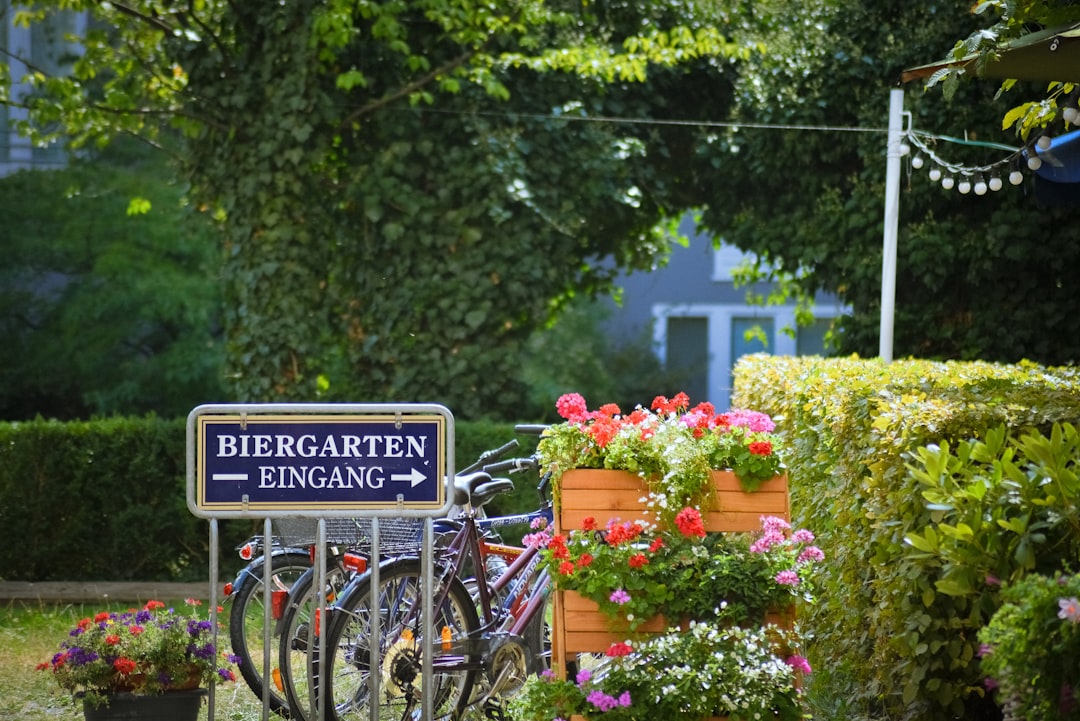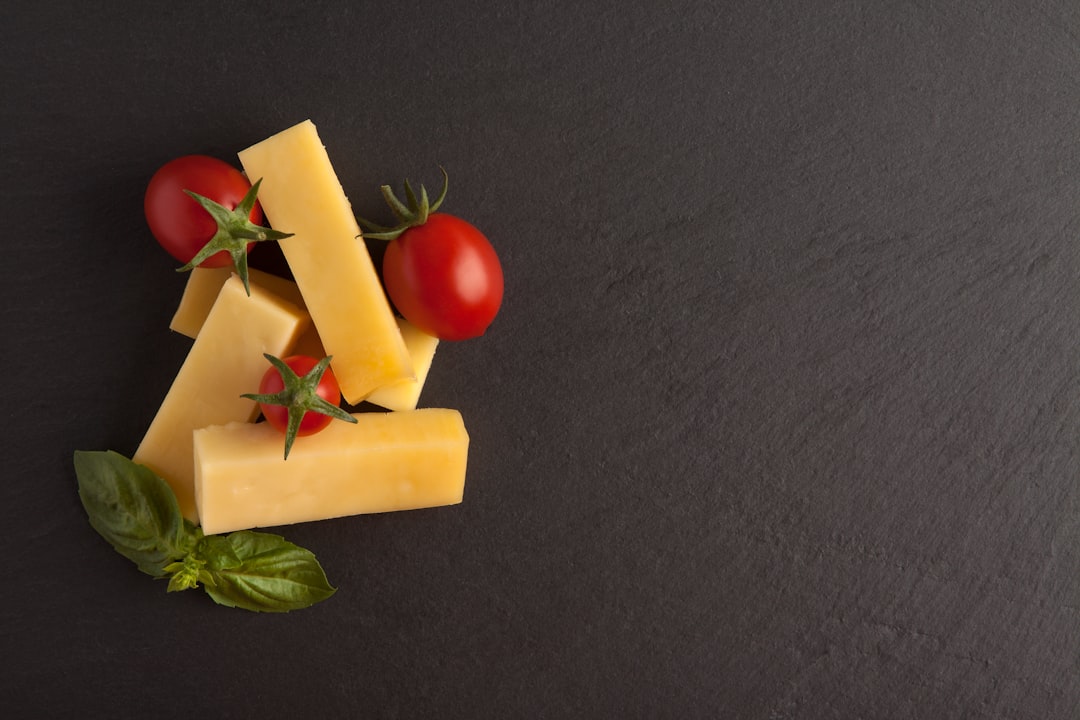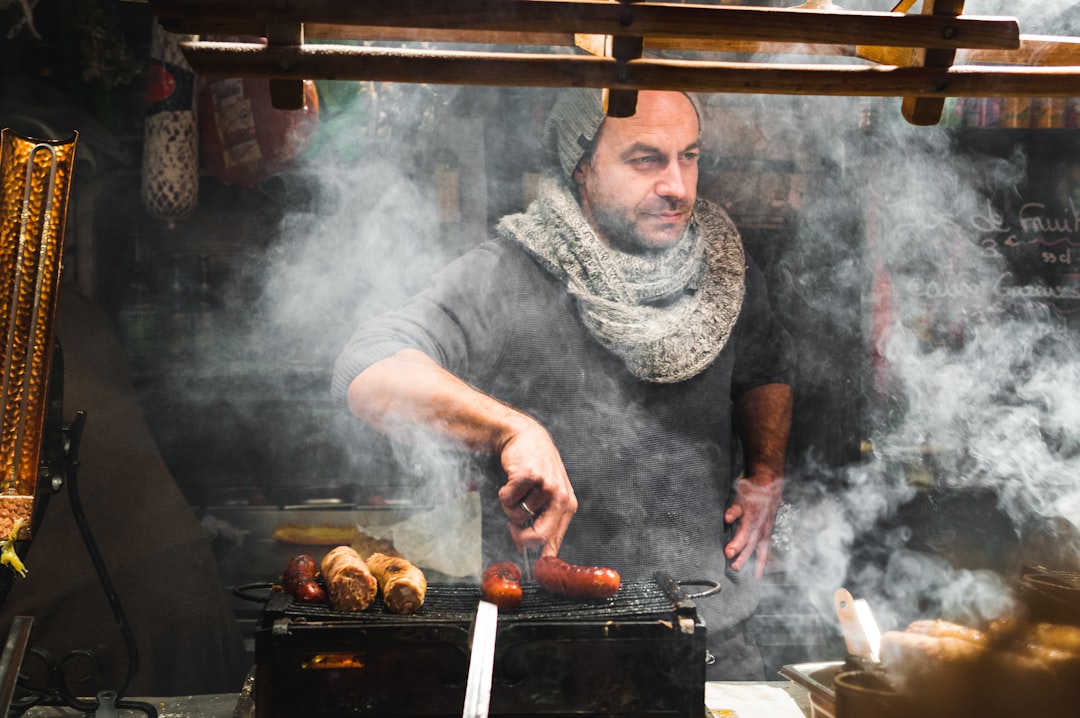From Currywurst to Spätzle: 20 Iconic German Foods You Need to Try
From Currywurst to Spätzle: 20 Iconic German Foods You Need to Try - Sausages and Schnitzel - German Favorites

No trip to Germany would be complete without sampling some of the country's famous sausages and schnitzel. These protein-packed dishes are total comfort food, and you’ll find them being served up everywhere from beer halls to food trucks.
Germans take their wurst (sausage) very seriously, with over 1,500 varieties to choose from. Regional specialties like the peppery Thüringer and the garlicky Bavarian weisswurst are absolute must-tries. Don't be intimidated by the long German names - just point and order what looks good! Pair your sausage with some crusty bread, sauerkraut, and mustard for the quintessential German experience. Pro tip: many types of wurst are made from pork, so vegetarians should look out for plant-based or chicken and turkey options.
Another ubiquitous German classic is schnitzel - breaded and fried cutlets made from veal, pork, or chicken. Wiener schnitzel is the most well-known, but you can find schnitzel made from just about any meat here. The preparation is quite simple, but it’s all in the technique - true schnitzel devotees say it must be so thin you can read a newspaper through it before breading and frying to a crisp, golden brown. Served alongside potato salad or fries with a lemon wedge, it's pure comfort food at its finest.
If you’re ready to go beyond the basics, try regional schnitzel specialties like Jägerschnitzel (with mushroom gravy) or Zigeunerschnitzel “Gypsy style” schnitzel with bell peppers and paprika). And for a unique twist, look for Schnitzel Hawaii featuring ham and pineapple - a polarizing combination that people seem to either love or hate!
What else is in this post?
- From Currywurst to Spätzle: 20 Iconic German Foods You Need to Try - Sausages and Schnitzel - German Favorites
- From Currywurst to Spätzle: 20 Iconic German Foods You Need to Try - Bread and Pretzels - Carb Lovers Rejoic
- From Currywurst to Spätzle: 20 Iconic German Foods You Need to Try - Potato Dishes Galore
- From Currywurst to Spätzle: 20 Iconic German Foods You Need to Try - Beer, Beer, and More Beer
- From Currywurst to Spätzle: 20 Iconic German Foods You Need to Try - Sweet Treats - Cakes, Cookies and Chocolate
- From Currywurst to Spätzle: 20 Iconic German Foods You Need to Try - Salads and Soups for Every Season
- From Currywurst to Spätzle: 20 Iconic German Foods You Need to Try - Cheese, Cheese, and Cheese Some More
- From Currywurst to Spätzle: 20 Iconic German Foods You Need to Try - Street Food Classics
From Currywurst to Spätzle: 20 Iconic German Foods You Need to Try - Bread and Pretzels - Carb Lovers Rejoic

From crusty loaves to soft pretzels, Germany is a carb-lover's paradise. Bread plays a central role in German cuisine, with over 300 varieties baked fresh daily across the country. Beyond just a vessel for sausage or cheese, artisanal breads are treasured for their unique flavors and textures. In German bakeries, you’ll find an astonishing array of options like dark pumpernickel, seeded vollkornbrot, sweet raisin loaf, and crisp baguettes. The varieties are endless, so don’t be afraid to try something new! Just be sure to follow German custom and never put bread directly on the table. Instead, place it in a bread basket to allow airflow and keep it fresh.
For an only-in-Germany experience, bite into a lye-dipped laugenbrezel (soft pretzel). These chewy, browned treats can be found at street stands or bakeries and range from petite rolls to giant pretzels meant to be shared. Bavarians traditionally enjoy them for a second breakfast or afternoon snack. The distinctive shine and crust comes from dipping the shaped dough in a bath of lye (sodium hydroxide) before baking. Don’t worry, the lye is washed off before eating! Laugenbrezel are best consumed warm, straight from the oven. Tear off a piece, spread on some butter, and sprinkle with salt for pure pretzel perfection.
If you prefer a sweeter spin on this Bavarian specialty, try grabbing a thick obatzda brezn. The defining feature of an obatzda brezn is that it’s spread with pungent Bavarian cheese dip made from Camembert, butter, paprika and onion before baking. The melted cheese in the crevices takes this soft pretzel to the next level! Obatzda brezn are a popular snack in beer gardens, and they pair perfectly with a cold brew.
For a memorable German breakfast, start your day with a basket of fresh rolls served with cheese, cold cuts, jam, honey and of course, coffee. This no-fuss spread allows the quality of the bread to shine. Look for brotchen, the famous little crusty German breakfast rolls. Their petite size makes them perfect for sandwiching cold cuts and cheese to grab and go. At many hotels in Germany, an extensive breakfast buffet is included with your stay. Take advantage and sample as many varieties of brotchen and bread as you can!
From Currywurst to Spätzle: 20 Iconic German Foods You Need to Try - Potato Dishes Galore
From hearty casseroles to crispy fries, the humble potato is transformed into comfort food magic across Germany. In this carb-loving country, potato dishes hold a special place at the table. Beyond just a side, creative potato preparations take center stage.
Potatoes have been cultivated in Germany since the late 16th century, but really became ingrained in the national cuisine under Prussian King Frederick the Great in the 1700s. Convinced potatoes could solve hunger issues, he ordered peasants to plant them. Initially resistant to this strange, underground fruit, Germans eventually embraced the versatile spud. Today, average annual potato consumption is over 110 pounds per person!
The German passion for potatoes manifests in Schupfnudeln - stubby potato dumplings served tossed in butter or topped with sauerkraut and bacon. Then there’s Reibekuchen, potato pancakes fried to a crisp and piled high as a snack, hearty potato soups topped with croutons or bacon bits, and of course, Germany’s thin, crispy answer to french fries - pommes frites.
While pommes frites are now ubiquitous pub grub, they originated in Berlin in the 1840s when a cook sliced potatoes into thin sticks to imitate expensive French fries. Germans have been dipping these crunchy frites in ketchup and mayo ever since. Order them mit alles (with everything) and you’ll get them topped with curry powder and onions.
For the ultimate potato bliss, try kartoffelpuffer, sometimes called reibekuchen. These savory potato pancakes are made from grated raw potatoes mixed with flour and egg, then fried in butter or oil. The exterior gets crispy and browned while the interior remains pillowy soft. Kartoffelpuffer are a beloved snack paired with applesauce or sour cream.
The crowning potato preparation is of course, Kartoffelsalat - German potato salad. This simple dish of warm sliced potatoes dressed in bacon fat vinaigrette can be found at any summer BBQ or beer garden. Recipes vary across regions, with some adding vinegar, onion or broth for moisture. The preparation triggers heated debate, with most agreeing the potatoes must soak up the smoky bacon flavor. The only question is whether to mix in the chopped bacon bits or use them as garnish.
From Currywurst to Spätzle: 20 Iconic German Foods You Need to Try - Beer, Beer, and More Beer

It’s no secret that beer is deeply ingrained in German culture. From monasteries brewing beer in the Middle Ages to today’s booming craft beer scene, this beloved beverage has shaped daily life for centuries. No exploration of German cuisine would be complete without paying homage to the country’s storied beer culture.
The sheer variety of beer styles brewed in Germany is astonishing. Beyond mass-produced pilsner, there are over 5000 brands producing regional specialties reflecting local tastes and ingredients. Wheat beers brewed with coriander and orange peel are popular in Berlin, while Bavarians prefer malty, chestnut-hued lagers and dark doppelbock brewed seasonally for Lent. Throughout Bavaria, the 500-year purity law restricting beer to just water, barley, hops and yeast is still followed.
Experiencing beer culture first-hand is a highlight for many travelers. Sitting in a sunny beer garden or joining rows of tables at a raucous beer hall builds conviviality. Newcomers may be surprised by customs like keeping your glass on the table to track your consumption. Servers deftly carry up to ten overflowing mugs at once from the bar! For the freshest pours, look for gravity-fed taps pulling beer directly from kegs stored below the bar. Side note, don’t expect to get buzzed on German beer’s average 4-5% ABV. These are brewed for sipping over long, leisurely hours among friends.
While beer today is pleasurable, brewing provided vital nutrition historically. Northern Germany’s water was unsuitable for winemaking, so beer became the daily drink. Brewing was a household task for centuries before shifting to monasteries for large-scale production. Later, beer purity laws ensured quality control as brewing industrialized. Samples from old casks prove beer was likely safer to drink than water, even for children.
Tracing beer history, it’s fascinating to visit centuries-old breweries still using traditional methods, like a smokehouse to make smoked beers. Many brewpubs and beer gardens are housed in historic monasteries, castles and cellars. Kloster Andechs near Munich has been brewing beer for monks under the same vaulted ceilings since 1455.
For those who want to dive deeper, Beer and Oktoberfest museums provide interactive exhibits explaining Germany’s special relationship with beer. At the famous Hofbräuhaus beer hall in Munich, guides share insider stories over tastings in the brewery’s original cellars. Excursions to modern craft breweries let you meet the brewmasters and sample experimental new beers.
From Currywurst to Spätzle: 20 Iconic German Foods You Need to Try - Sweet Treats - Cakes, Cookies and Chocolate
Indulging in something sweet is a cherished ritual in Germany, where bakeries tempt with endless displays of decadent cakes, rich chocolates, and artfully decorated cookies. While savory dishes may reign at main meals, no one can resist a pause for something sugary and sublime with their afternoon kaffee. Sweet treats hold a special place in German food culture.
In German bakeries, rows of tortes gleam under glass domes, showcasing fuss-free elegance. There’s the world-famous Schwarzwälder kirschtorte, or Black Forest cake, layers of chocolate cake infused with kirschwasser liqueur, filled with whipped cream and dark cherries. Then there’s streuselkuchen, a simple butter cake topped with crunchy streusel crumbs spiced with cinnamon.Sheet cakes called blechkuchen are thin and rectangular for sharing. Traditional bakeries still make old fashioned German buttercream frostings, forgoing artificial flavors and colors.
Beyond cakes, creativity shines in endless cookies, from chewy lebkuchen gingerbread spiced with cloves, to melt-in-your-mouth spritzgebäck pressed into fanciful shapes. Around Christmas, decorative springerle cookies imprinted with images are gifted in tin boxes tied with ribbon. Bakers take pride in traditional recipes passed down for generations.
Chocoholics will delight at the chocolate selection in Germany. Candy aisle favorites like Milka bars and Ritter Sport are everyday treats, while handmade truffles and whimsical chocolate creations are gifts for special occasions. Each major chocolate brand has its own chocolate museum celebrating their founders! For many Germans, chocolate is more than just a sugary snack - it's an expression of quality, craftsmanship and national pride.
There's no better place to experience German confectionery than a konditorei, a dedicated cake shop and cafe. Here patrons linger for hours over slices of multilayered cream tortes and mugs of hot chocolate. The setting is as sweet as the pastries - think gilded mirrors, marble topped tables and rococo prints on the walls. Indulging in afternoon coffee and cake is time well spent, encouraging relaxation and bonding with friends.
From Currywurst to Spätzle: 20 Iconic German Foods You Need to Try - Salads and Soups for Every Season
While hearty roasts and rich desserts may get all the hype, salads and soups also hold an esteemed place in German cuisine. These lighter dishes provide balance year-round, with recipes changing according to seasonal ingredients. Salads and soups showcase produce when it’s at its peak, keeping flavors bright and vibrant.
In spring, Germans celebrate the first tender greens after the long winter. Tender lamb’s lettuce and peppery watercress are simply dressed with oil and vinegar as Vinaigrette - a classic composed salad. Early spring peas and fava beans add sweetness to mixed green salads topped with shaved radishes. Lightly cooked asparagus - white or green - is tossed in a lemony vinaigrette and served warm, or chilled into a salad.
As summer arrives, tomatoes take the spotlight in salads and chilled soups. A simple farmer’s salad piles sweet cherry tomatoes, cucumbers and red onion atop crunchy romaine lettuce. Gazpacho soup blends ripe tomatoes, cucumber, bell peppers and bread into a cold, refreshing soup - perfect for sweltering days. The summer harvest brings an abundance of lettuces, greens and fresh herbs like chives, dill and parsley for salad fixings.
Root vegetables herald the autumn, adding substance and warmth to salads and soups. Thinly sliced fennel and crunchy apples are brightened with lemon and olive oil. Beets lend an earthy sweetness and brilliant color to lively salads when paired with tangy yogurt dressing. Hearty pureed soups feature potatoes, parsnips or carrots delicately spiced with nutmeg, cumin or curry powder.
In the cold of winter, Germans turn to sauerkraut for tang and crunch in their salads. Shredded red or green cabbage is salt-brined into this quintessential German pantry staple. Wilted spinach finds new life when paired with smoky bacon and cream. Cabbage, lentils and sausage make a rib-sticking winter soup. Adding a splash of vinegar or lemon juice just before serving brightens flavors.
From Currywurst to Spätzle: 20 Iconic German Foods You Need to Try - Cheese, Cheese, and Cheese Some More

Cheeseholds a special place in German cuisine. With over 1500 varieties produced across the country, cheese flavors evolve with the season and geography. From pungent soft cheeses to hearty Alpine styles perfect for melting, the impressive range reflects regional pride in cheesemaking traditions. For locals, specific cheeses are tied to hometown recipes and customs, but travelers get to experience Germany’s cheese diversity anew.
In Bavaria, Obazda is a pungent, ripened Camembert-based cheese dip eaten with pretzels or bread. Its creamy texture comes from blended with butter, onions, paprika and sometimes beer. Obazda originated as a thrifty way to use up scrap cheeses in Alpine dairies but is now a celebrated Bavarian specialty. The Allgäu region produces Germany’s answer to Gruyere and Emmentaler with mild, nutty Alpine cheeses like Allgäuer Emmentaler and Allgäuer Bergkäse. Their distinctive holey appearance comes from bubbles of carbon dioxide released during aging in caves. Locals grate these firm cheeses over pasta or potatoes.
In the far north, frischkäse, a fresh, tangy cheese spread is a breakfast staple paired with preserves or smoked fish on bread. Harzer Käse is another unique northern specialty - a small, crumbly cheese preserved in brine and redolent of caraway seeds. The aged versions take on a pungent aroma reminiscent of yeast and wet stone. Spread on rye bread, it adds a savory kick.
While specialty cheeses abound, everyday Germans appreciate more common varieties too. Sliced gouda, havarti and fresh mozzarella are daily staples. Soft, white quark cheese offers versatility - it can be blended into dips, stirred into sauces, or sweetened with fruit and sugar for dessert. The most iconic German cheese experience though is a gooey slice of Käsespätze, a filled pasta swimming in melted Emmentaler and garnished with fried onions. This rib-sticking dish is cherished as quintessential German comfort food.
From Currywurst to Spätzle: 20 Iconic German Foods You Need to Try - Street Food Classics

While Germany has a well-earned reputation for hearty cuisine, some of the most craveable and convenient eating comes from street food stands and food trucks. Like many travelers, I’m on a mission to experience authentic local flavors wherever I go. Street eats capture regional specialties in quick, affordable bites. For budget-conscious sightseers or foodies eager to sample diverse cuisines, street food is the way to go. Across Germany, beloved street snacks reflect local ingredients and traditions.
When seeking out excellent street food, head to markets for an array of tempting kiosks and carts. Christmas markets in December are especially abundant, but weekly farmers markets also draw vendors. Look for stands clustered near transportation hubs as well - train stations and airports lure hungry commuters. Don’t be afraid to join the queue and point to your selection if the server speaks minimal English. For a few euros, you can discover new flavors and fuel up between sightseeing spots.
One unmissable German street food is the legendary Currywurst, created in Berlin after WWII when a creative cook added curry powder to spiced ketchup and poured it over sizzling pork sausage. Today Currywurst is still Berlin’s quintessential fast food, with cult following vendors renowned for their proprietary spice blends. Locals line up for the addictive combination of tender, charred sausage doused in curried tomato sauce, dusted with curry powder and served with fries or bread.
While Currywurst dominates in Berlin, Bavaria has its own street food icon - Obatzda. The pungent cheese and butter spread is served warm, topped with paprika and onions alongside a hefty soft pretzel. It offers a satisfying salty, hearty accompaniment to a stein of beer, perfect for enjoying al fresco.
Throughout Germany, Imkers grill up hefty turkey legs smothered in sticky honey-mustard glaze - like something you’d nosh at a medieval fair, but conveniently found on urban street corners today. Thuringia claims Germany’s best bratwurst, often sizzling on outdoor grills so you can see your exact sausage being plucked from the pack and nestled into a crusty roll with sweet mustard.
